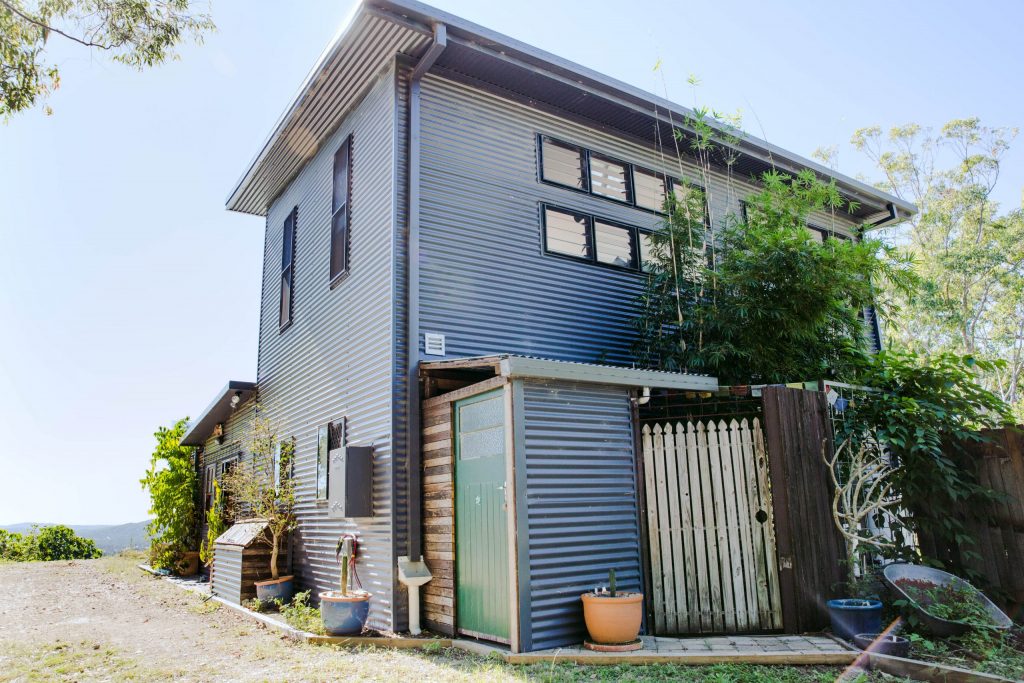The National Construction Code (NCC) sets out the minimum technical requirements for new buildings (and new building work in existing buildings) in Australia. In doing so, it groups buildings by their function and use. These groups are assigned a classification which is then how buildings are referred to throughout the NCC. This information is crucial for all NCC users. The following is a general representation of the building classifications in the NCC. It is based on a national perspective and does not address any State or Territory variations.


The building classifications are labelled “Class 1” through to “Class 10”. Some classifications also have sub classifications, referred to by a letter after the number (e.g.Class 1a). Class 2 to 9 buildings are mostly covered by Volume One of the NCC and Class 1 and 10 buildings are mostly covered by Volume Two of the NCC. Volume Three of the NCC, the Plumbing Code of Australia, refers to all building classifications.
A building may have parts that have different uses. In most cases, each of these parts must be classified separately. A building (or part of a building) may also have more than one use and may be assigned more than one classification.
A Sole Occupancy Unit (commonly known as an SOU) is defined in the NCC. It is a part of a building for occupation by an owner/s, lessee, or tenant, to the exclusion of any other owner/s, lessee, or tenant. So put simply, it is a space with an exclusive use in a building.SOUs can be located in a number of different classifications. They include:
Class 1 buildings are houses. Typically they are standalone single dwellings of a domestic or residential nature. They can also be horizontally attached to other Class 1 buildings such as terrace houses, row houses, or townhouses. In these situations they must be separated by a wall that has fire‑resisting and sound insulation properties.
The Class 1 classification includes two sub classifications: Class 1a and Class 1b. A Class 1a building is a single dwelling being a detached house; or one of a group of attached dwellings being a town house, row house or the like.
Class 1 buildings cannot be located above or below any other dwelling (or any other class of building) other than a private garage. A Class 1b building is a boarding house, guest house or hostel that has a floor area less than 300 m2, and ordinarily has less than 12 people living in it. It can also be four or more single dwellings located on one allotment which are used for short-term holiday accommodation.
Class 2 buildings are apartment buildings. They are typically multi-unit residential buildings where people live above and below each other. The NCC describes the space which would be considered the apartment as a sole-occupancy unit (SOU).
Class 2 buildings may also be single storey attached dwellings where there is a common space below. For example, two dwellings above a common basement or carpark.

Classification is a process for understanding risk in a building (or part of a building) according to its use. Where it is unclear which classification should apply, the approval authority has the discretion to decide.
Class 3 buildings are residential buildings other than a Class 1 or Class 2 building. They are a common place of long term or transient living for a number of unrelated people. Examples include a boarding house, guest house, hostel or backpackers (that are larger than the limits for a Class 1b building). Class 3 buildings could also include dormitory style accommodation, or workers’ quarters for shearers or fruit pickers.
Class 3 buildings may also be “care-type” facilities such as accommodation buildings for children, the elderly, or people with a disability, and which are not considered to be Class 9 buildings. A Class 3 building also includes the residential parts of hotels, motels, schools, hospitals, or jails.
A Class 4 part of a building is a dwelling or residence within a building of a non-residential nature. An example of a Class 4 part of a building would be a caretaker’s residence in a storage facility. A Class 4 part can only be located in a Class 5 to 9 building.
If the building is only residence, then it is likely to be a Class 4 part of a building. There can only be one Class 4 part in a building.
Class 5 buildings are office buildings that are used for professional or commercial purposes, excluding Class 6, 7, 8 or 9 buildings. Examples of Class 5 buildings are offices for lawyers, accountants, general medical practitioners, government agencies and architects.
Generally, a general medical practitioner’s office will be a Class 5 building. However, if any medical treatment administered leaves patients unconscious or non-ambulatory, then the building would be considered a health-care building(as defined by the NCC) and be a Class 9a building, for example a hospital.

Class 6 buildings are typically shops, restaurants and cafés. They are a place for the sale of retail goods or the supply of services direct to the public. Some examples are:
Yes, as they are intended for the servicing of cars and the sale of fuel or other goods. However, the term “service station” does not cover buildings where panel beating, auto electrical, tyre replacement or the like are solely carried out. These would be Class 8 buildings
Class 7 buildings include two sub classifications: Class 7a and Class 7b. Class 7a buildings are carparks. Class 7b buildings are typically warehouses, storage buildings or buildings for the display of goods (or produce) that is for wholesale.
Reference to wholesale means “sale to people in the trades or in the business of ‘on‑selling’ goods and services to another party (including the public)”.
A factory is the most common way to describe a Class 8 building. It is a building in which a process (or handicraft) is carried out for trade, sale, or gain. The building can be used for production, assembling, altering, repairing, finishing, packing, or cleaning of goods or produce. It includes buildings such as a mechanic’s workshop. It may also be a building for food manufacture, such as an abattoir.
A laboratory is also a Class 8 building, even though it may be small in size. This is due to their high potential for a fire hazard.
It depends on the occupancy, use and size. Buildings used for farming-type purposes are often very diverse in nature. For example a shed for parking a single tractor may be a Class 10a, however if multiple tractors and other farm machinery is parked, the building may be a Class 7a (or even a Class 8 if mechanics were employed to work on the machinery).
The NCC defines a difference between a farm shed and a farm building. It also contains specific Deemed‑to‑Satisfy Provisions for these buildings under part H3 of Volume One.
Class 9 buildings are buildings of a public nature. Class 9 buildings include three sub classifications: Class 9a, Class9b and Class 9c.
Class 9a buildings are generally hospitals which are referred to in the NCC as health-care buildings. They are buildings in which occupants or patients are undergoing medical treatment and may need physical assistance to evacuate in the case of an emergency. This includes a clinic (or day surgery) where the effects of the treatment administered would involve patients becoming unconscious or unable to move. This in turn requires supervised medical care (on the premises) for some time after treatment has been administered.
Class 9b buildings are assembly buildings in which people may gather for social, theatrical, political, religious or civil purposes. They include schools, universities, childcare centres, pre-schools, sporting facilities, nightclubs, or public transport buildings.
Laboratories which are part of health-care buildings are classified as Class 9a buildings despite the general classification of laboratories being Class 8. Class 9c buildings are aged care buildings. Aged care buildings are defined as residential accommodation for elderly people who, due to varying degrees of incapacity associated with the ageing process, are provided with personal care services and 24 hour staff assistance to evacuate the building in an emergency.
Class 10 buildings are non‑habitable buildings or structures. Class 10 includes three sub classifications: Class 10a, Class 10b and Class 10c.
Class 10a buildings are non-habitable buildings including sheds, carports, and private garages.
Class 10b is a structure being a fence, mast, antenna, retaining wall, swimming pool, or the like. A Class 10c building is a private bush fire shelter. A private bush fire shelter is a structure associated with, but not attached to, a Class 1a building.

Any separate single storey garage associated with another building that contains no more than 3 vehicles.
As buildings can have mixed uses they can also have mixed (or multiple) classifications. For example, a building may have a basement carpark (Class 7a) with ground floor retail space (Class 6) and residential apartments above (Class 2). See below.
Every part of a building must be separately classified. However,where a part has a different purpose and is not more than 10% of the floor area of the storey it is on, then it may be considered to be ancillary to the major use.
For instance, if a single storey warehouse (Class 8) has an office (Class 5) which takes up only 8% of the floor area, the whole building can be classified as a Class 8. However, if the office takes up 12% of the floor area then the building has mixed uses and the warehouse (Class 8) and office (Class 5) must be classified separately.
A building (or a part of a building) may be designed to serve multiple purposes and may have more than one classification. This means that it is permissible for a building to be a Class 6/7, or a Class 5/6, or whatever is appropriate. This allows flexibility in how the building might be used over time. For example, if a building is intended for retail shopping, storage or office space it may be designed as a Class 5/6/7.
At the design stage, it may not be clear who the final tenant will be (orhow they will be using their tenancy) so as long as the design meets the minimum requirements of all the classifications, it could be used for any of the purposes.

Superior Garages and Industrials are reputable steel builders, based on the Sunshine Coast. We are committed to excellence and provide tailored shed building solutions to individuals and businesses in the region.